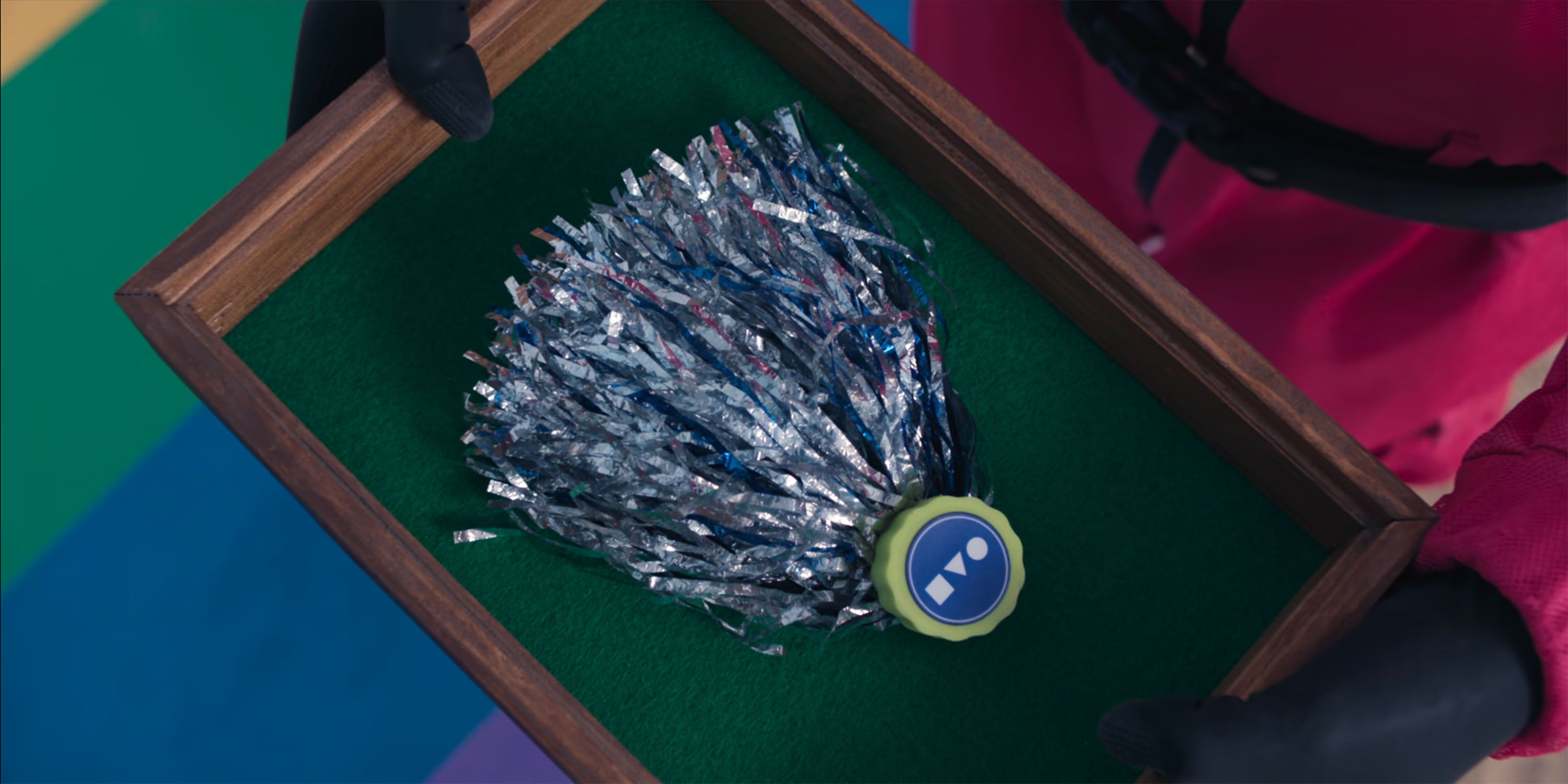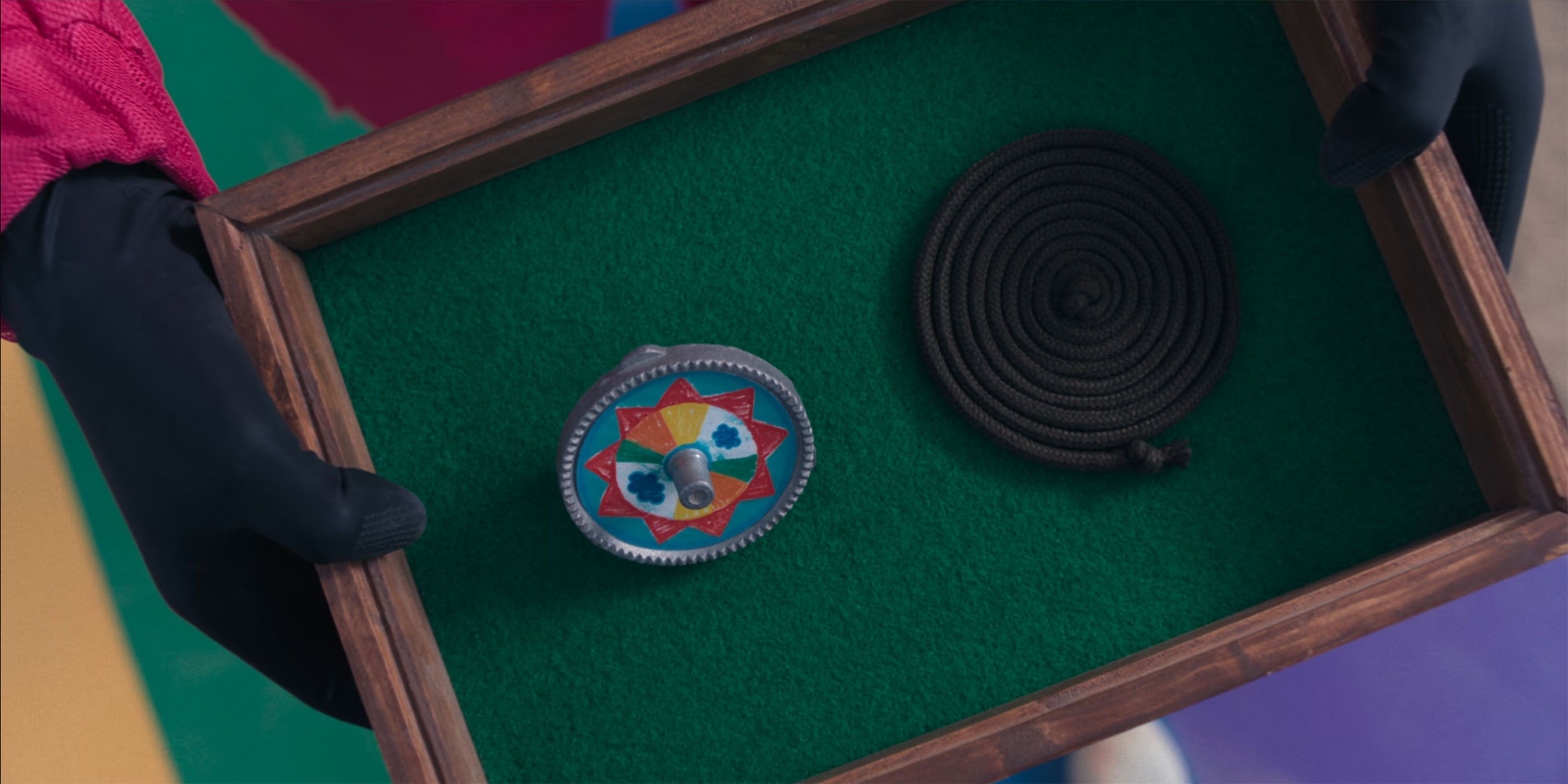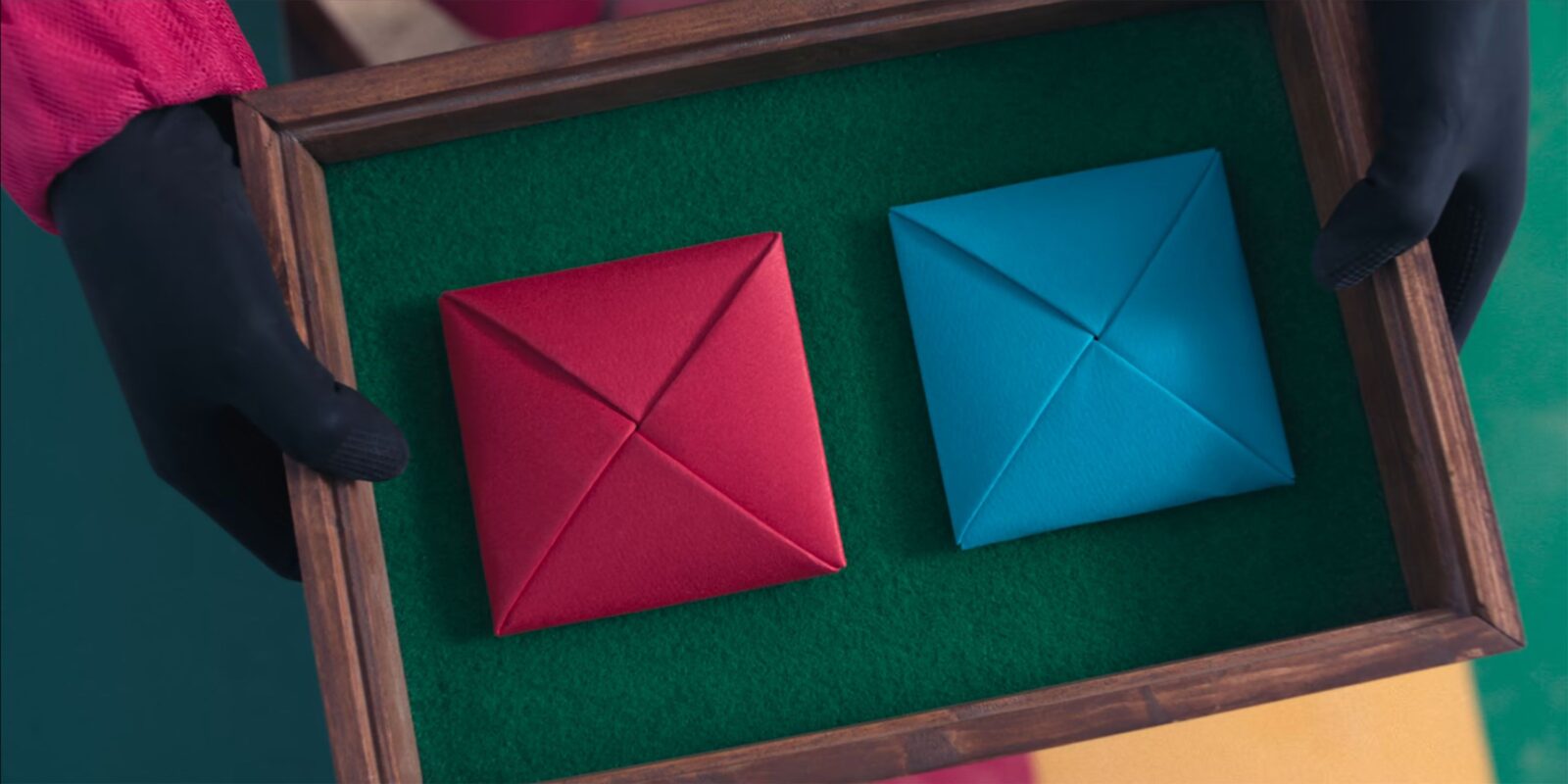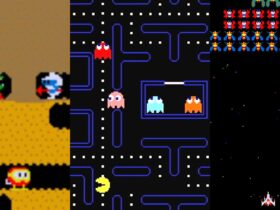Summary
- Ddakji plays a significant role in Squid Game and can be played without gambling.
- Anyone can make a Ddakji tile using two squares of origami or construction paper.
- One can enhance their Ddakji skills by aiming for the puffiest part of the tile and experimenting with different sizes.
Squid Game introduced many Korean children’s games to Western audiences. Dalgona, the sugar cookie cut-out game, is one example. Games like Gonggi and Jegi are others. However, one children’s game is synonymous with Squid Game: Ddakji, the origami paper-flipping pastime.
Ddakji plays a significant role in Squid Game due to its use as a recruitment tool by The Salesman. However, the game appears in other story arcs, like the Pentathlon episodes. If you’ve ever watched a game of Ddakji and thought, “I could do that,” check out these tips and tricks for learning the game. You’ll even see how to make Ddakji tiles using everyday objects!

Related
“One, two, three, four, five!” Keep that Jegi airborne with these tips and tricks for this minigame from Squid Game.
How to Win Ddakji
The goal in Ddakji is simple: flip your opponent’s paper tile by throwing your paper tile onto it with a strategic angle and force. In Squid Game, Ddakji is a gambling game in which the thrower gets rewarded for flipping the tile, and the opponent gets rewarded when the thrower fails. However, you can play Ddakji with multiple tiles (and without gambling), which we’ll discuss below.
How to Make a Ddakji Tile
Eager Ddakji beginners may want to hop online and purchase Squid Game toy sets. Fortunately, there is no need to lay down cash. You can create a Ddakji tile with two squares of origami or construction paper. Follow the steps below.
- Grab two origami paper squares of identical size. You can also make squares with scissors, a ruler, and construction paper.
- Fold your first square into thirds horizontally.
- Then, fold an upward-facing triangle on the right side of the paper and a downward-facing triangle on the left.
- Repeat steps two and three with the second square piece of paper.
- Stack your paper squares on top of each other perpendicularly. The result should look like a simple pinwheel.
- Fold the left and right triangles inward to create a smaller square.
- Lastly, fold the top triangle underneath the right flap and the bottom triangle underneath the left flap.
- If you completed your tile correctly, it should maintain its structure without adhesive.
To avoid confusion, one should ensure their Ddakji tiles are a different color than their opponent’s.
Ddakji Rules
Ddakji’s rules are straightforward, so there is little to elaborate on. However, let’s discuss how to play Ddakji with multiple tiles. Like the single-tile version, this iteration of Ddakji gets played in pairs.
- The two competing players decide who will throw their Ddakji tile first. The non-throwing player places their tile on the floor/playing surface.
- If the throwing player successfully flips their opponent’s Ddakji, they get to claim it.
- Players switch roles regardless of whether the thrower’s attempt succeeded. So, the flipper becomes the flippee and vice versa.
- Play continues until one player has collected all of their opponent’s tiles.
It’s also possible to play Ddakji up to a certain win point. This method is suitable for avoiding longer games or when both players only have one Ddakji tile on hand.

Related
Squid Game: How to Play Paengi Chigi/Spinning Top
Become a spin master with these tips and tricks for Paengi Chigi, a minigame featured in Squid Game’s six-legged pentathlon!
Ddakji Tips and Tricks
While Ddakji’s objective is simple, it’s also challenging to accomplish. Flipping your opponent’s paper tile takes the perfect combination of force and precision. So, what can you do to find that ideal Ddakji throw?
- Aim for the Puffiest Part of the Tile: Why aim for the puffiest part of the tile? In short, you want to hit the point of the tile that will cause the most motion. When you hit the puffy part of the tile, the air between the folds will compress, causing a springboard effect that will propel the tile over.
- Experiment with Different Tile Sizes: Fold various sizes of Ddakji tiles when learning the game. This way, if one size is too hard to flip consistently, you can practice with a tile of a different size that suits your skills. Plus, practicing with tiles of various sizes will help you adapt to whatever game of Ddakji you play.
- Practice Makes Perfect: Ddakji is easy to understand but challenging to master. So, remember to stay persistent if you struggle with flipping the Ddakji tile at first. Like any pastime, your Ddakji proficiency will improve with time, focus, and effort.












Leave a Reply